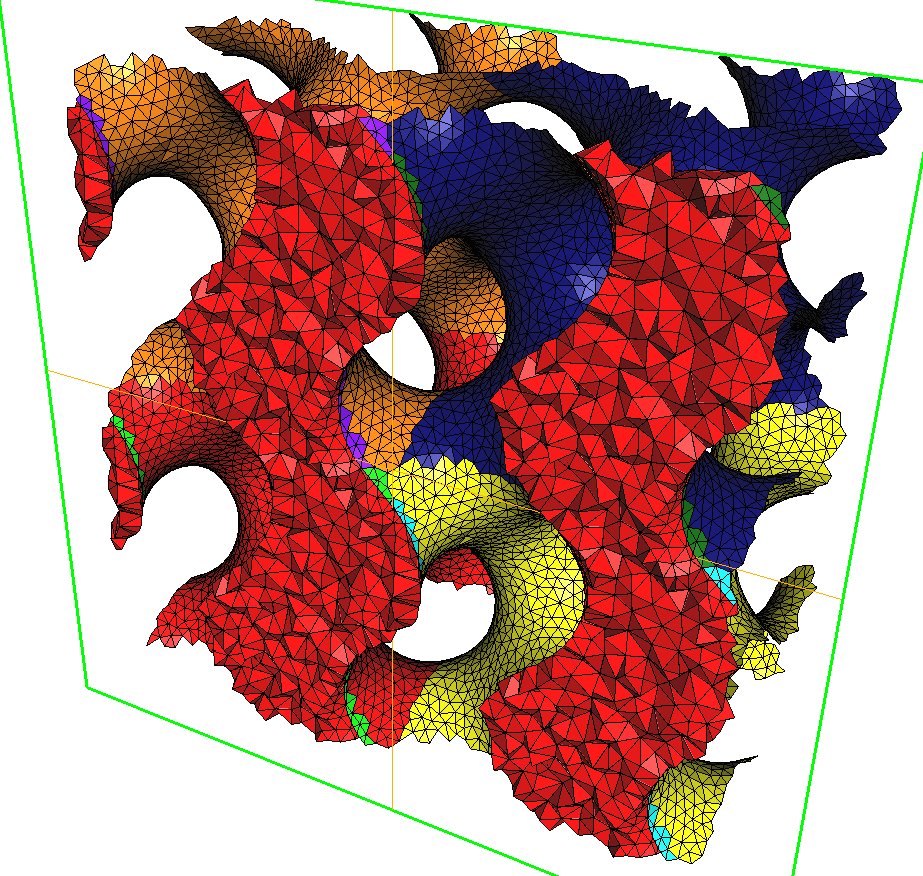Section: Research Program
Non-Euclidean computational geometry
|
Triangulations, in particular Delaunay triangulations, in the
Euclidean space
It is fair to say that little has been done on non-Euclidean spaces,
in spite of the large number of questions raised by application
domains. Needs for simulations or modeling in a variety of
domains (See
CGAL Prospective Workshop on Geometric Computing in Periodic Spaces,
Subdivide and Tile: Triangulating spaces for understanding the world,
Computational geometry in non-Euclidean spaces,
Shape Up 2015 : Exercises in Materials Geometry and Topology )
ranging from the infinitely small (nuclear matter, nano-structures,
biological data) to the infinitely large (astrophysics) have led us to
consider 3D periodic Delaunay triangulations, which can be seen
as Delaunay triangulations in the 3D flat torus, quotient of
Interestingly, even for the simple case of triangulations on the sphere, the software packages that are currently available are far from offering satisfactory solutions in terms of robustness and efficiency [40].
Moreover, while our solution for computing triangulations in hyperbolic spaces can be considered as ultimate [33], the case of hyperbolic manifolds has hardly been explored. Hyperbolic manifolds are quotients of a hyperbolic space by some group of hyperbolic isometries. Their triangulations can be seen as hyperbolic periodic triangulations. Periodic hyperbolic triangulations and meshes appear for instance in geometric modeling [62], neuromathematics [45], or physics [65]. Even the case of the Bolza surface (a surface of genus 2, whose fundamental domain is the regular octagon in the hyperbolic plane) shows mathematical difficulties [34], [57].




